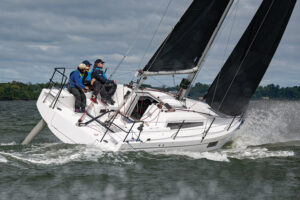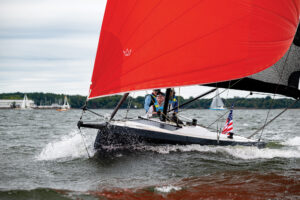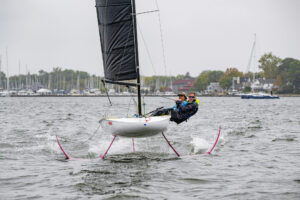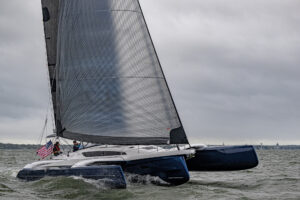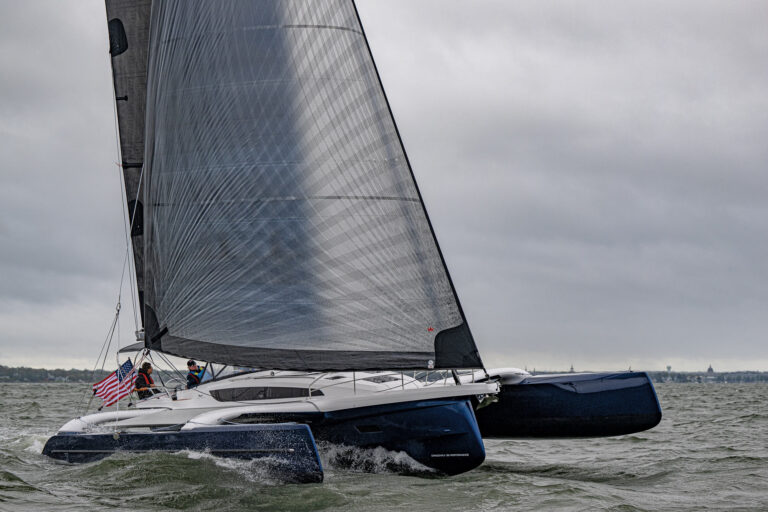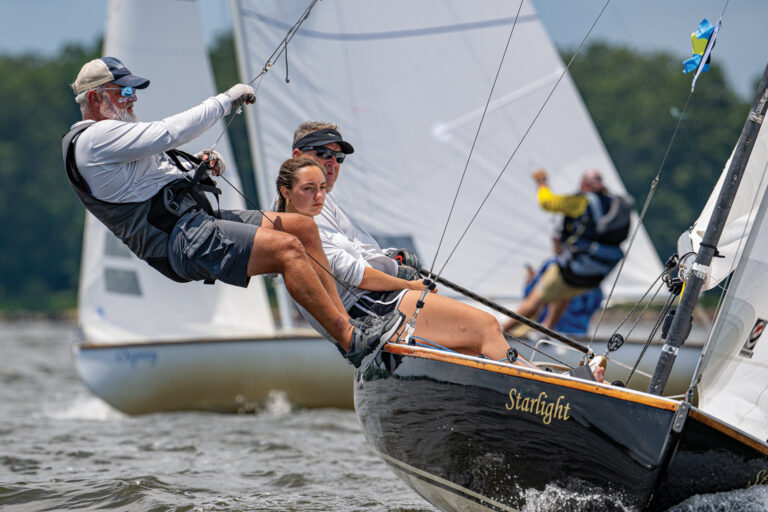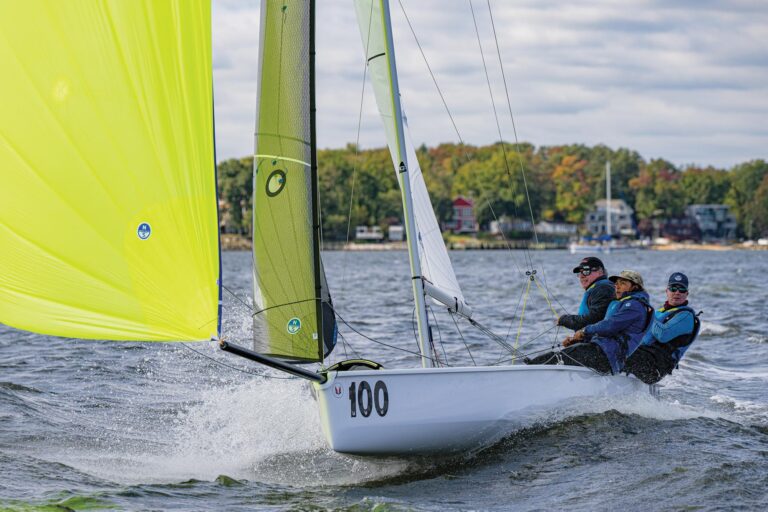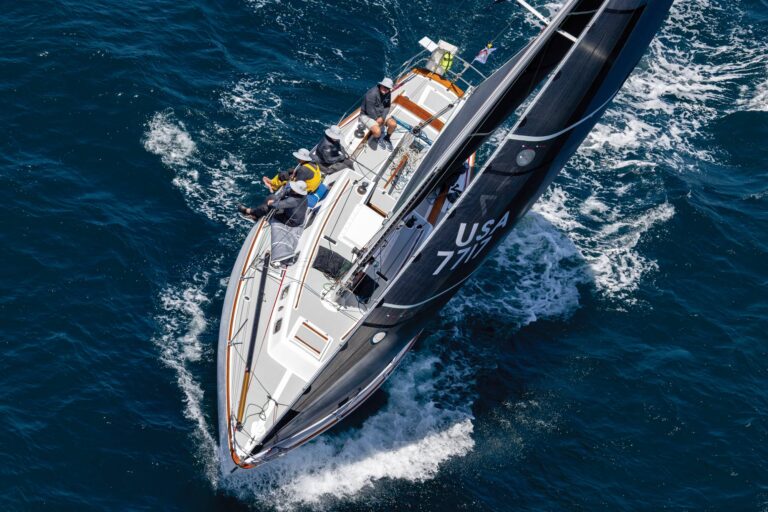When Doug Baker wanted a new Magnitude he didn’t let the lack of an offshore rule get in his way. Instead, he went to Alan Andrews Yacht Design and Dencho Marine, both of which he’d built boats with before, and asked for an 80-footer that would do well in West Coast distance races. Baker, 66, knew that canting-keel technology would be important. “If you want a grand-prix boat, that’s what you have to do,” says Baker. “It’s a big hassle to put in because there’s so much engineering involved, but it’s a huge advantage and well worth it. You put all that weight up on the high side and there you are.” Because of its complexity, Magnitude 80 had its ups and downs in 2004. “Last year was part of the growing process,” says Baker. But by mid-summer they were starting to figure it out, and Magnitude 80 was second across the line only to the 140-foot Mari-Cha IV in the West Marine Pacific Cup. Earlier this year, Baker and his 13 crew took line honors in the Marina del Rey to Puerto Vallarta Race and broke the course record in the 800-mile Newport Beach to Cabo San Lucas Race by eight hours. Forward of Magnitude 80’s Hall Spars rig is a single daggerboard on centerline, which gives the big carbon-fiber boat the lift that the keel strut doesn’t provide. “We quickly decided that was the way to go for so much offshore racing and downwind sailing instead of a forward rudder or twin bilgeboards,” says Andrews. “Having a retractable board means we can get rid of the drag and have as much or as little of the board showing as we want.” Having a daggerboard directly forward of the mast, however, prevents the use of a spinnaker pole-a tradeoff Baker accepts. “Doug also likes to sail Wednesday night beer can races,” says Andrews. “When you’re sailing around Long Beach in a boat that big and that fast, and using a kite, you want a system that’ll work well with that, so we figured ‘why not put a retractable bowsprit on this thing?'” Andrews and Hall Spars developed a retractable deck-mounted pole that, once fully extended, can swing on a pivot point. “For the Wednesday night races they lock the pole on centerline so they don’t have to use spinnaker guys,” says Andrews. “When the wind comes up on a distance race and you want to pull the pole back a bit, instead of blowing off a tack line and having the whole sail blow off to leeward, you raise the pole out of the chock and pull it back. It’s a little complicated but it solves that problem of having the spinnaker pole hitting the top of the board when the board is pulled up.” Before the start of the ’05 Transpac race Barker had his strategy laid out. “We’re not rated as fast as the three maxZ86s (Pyewacket and Morning Glory, both canting-ballast, twin-foil boats, and Windquest, a fixed-keel boat); they have to give us just under 10 hours,” he said. “On paper, we’re not as fast, but we’re not conceding that we can’t get there first. Our hope is that maybe the three of them will go someplace and we can slip away.” Magnitude wasn’t able to sneak past any of the bigger boats, crossing the line fifth, but it did finish second overall on corrected time in Division 1, 1h:14m behind new course record holder Morning Glory. Technical Highlights LOA: 80’ LWL: 70’7″ Beam: 14’6″ DSPL: 31,750 lbs. Ballast: 13,050 lbs. Upwind S/A: 3,075 sq. ft. Downwind S/A: 6,983 sq. ft. Draft: 12’2″ Design: Alan Andrews Builder : Dencho Marine Sails: North Paint Systems: Sterling Topcoats Mast/Rigging: Hall Spars/Navtec/Future Fibres Instruments: B&G Deck hardware: Harken Rigging hydraulics: Cariboni Keel system: Dirk Kramers DKI -Tony Bessinger
